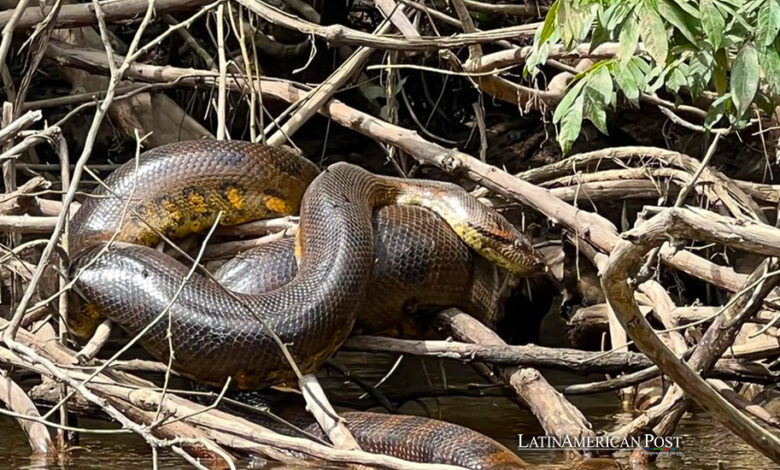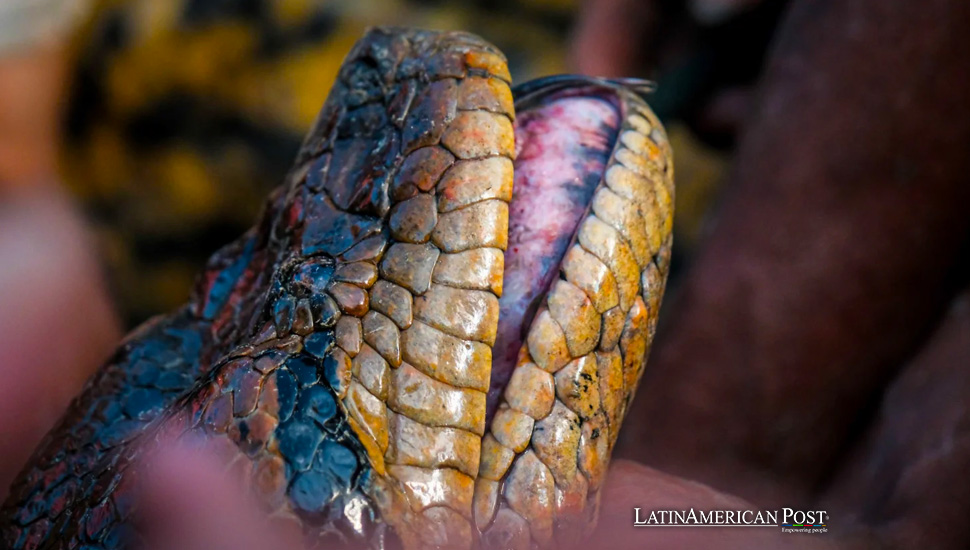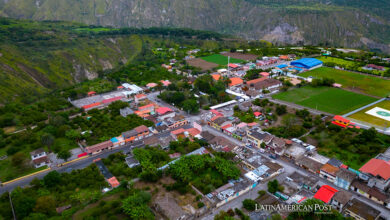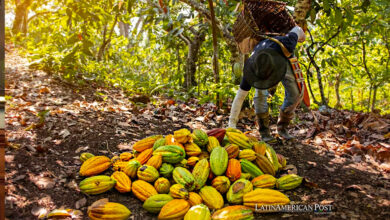New Giant Anaconda Species Discovered in Ecuadorian Amazon is Among the World’s Largest

Amidst the lush, uncharted territories of the Ecuadorian Amazon, scientists have unveiled a groundbreaking discovery: a new species of giant anaconda, sparking urgent discussions on conservation and the critical threats facing the Amazon’s delicate ecosystems.
Unveiling the Hidden Wonders
In the heart of the Ecuadorian Amazon, a region steeped in biodiversity and indigenous lore, a remarkable discovery has emerged, shedding new light on the richness and fragility of this vital ecosystem. Led by Professor Bryan Fry of The University of Queensland, a team of scientists, in collaboration with a National Geographic film crew, has identified a previously undocumented species of giant anaconda, the northern green anaconda (Eunectes Nakajima), in the Bameno region of Baihuaeri Waorani Territory.
This discovery, made during the filming of National Geographic’s upcoming Disney+ series “Pole to Pole” with Will Smith, is not just a monumental achievement in herpetology; it represents a poignant reminder of the Amazon’s unparalleled biodiversity and the pressing need to protect it. The northern green anaconda’s identification highlights the critical importance of collaborative research and the role of indigenous knowledge in unveiling the mysteries of the natural world.

Indigenous Wisdom: A Key to the Anaconda’s Secret
The Waorani people, guardians of the Amazon, extended a rare invitation to the scientists, guiding them through the dense jungle on a 10-day expedition. Their ancestral wisdom and deep respect for the anaconda, considered sacred within their culture, were instrumental in locating these elusive giants. The enormous female anaconda encountered measured an impressive 6.3 meters, with local anecdotes suggesting the existence of even larger specimens within the region.
This new species distinguishes itself genetically from its southern counterpart by 5.5 percent, a significant divergence that underscores the Amazon’s role as a cradle of evolutionary diversity. Such a discovery is a career highlight for Fry and a testament to the enduring mysteries of the Amazon, waiting to be uncovered by those willing to listen and learn from its indigenous inhabitants.
However, this discovery is shadowed by the looming threats of deforestation, habitat degradation, and pollution, which jeopardize the newly discovered anaconda and countless other species that call the Amazon home. The relentless advance of agricultural expansion, mining activities, and climate change-induced fires and droughts paints a dire picture for the future of the Amazon’s ecosystems.
The Amazon, often dubbed the “lungs of the Earth,” is at a critical juncture. The discovery of the northern green anaconda is a stark reminder of what is at stake: a biodiversity hotspot that is a repository of untold natural wonders and a key player in the global climate system. As the Amazon goes, so does the health of our planet.
Cross-Cultural Collaboration for Conservation
The collaboration between scientists and the Waorani people in this discovery exemplifies the potential for cross-cultural partnerships to advance conservation efforts. It’s a model that should be replicated across Latin America, where the rich tapestry of indigenous knowledge and modern science can come together to protect the continent’s precious natural heritage.
Latin American countries, sharing the bounty and the plight of the Amazon, must rally together to address the ecological challenges facing this region. The Amazon’s fate is a shared responsibility from Peru to Brazil, Colombia to Venezuela. Regional cooperation, supported by international allies, is paramount in crafting sustainable solutions that honor the Amazon’s ecological and cultural integrity.
In light of this discovery, there is an urgent need for comprehensive research into the effects of environmental degradation on the Amazon’s wildlife. The impact of petrochemicals on the reproductive biology of the northern green anaconda and other keystone species offers a critical area of study that could provide insights into the broader ecological consequences of pollution in the Amazon.
Also read: Ecuador’s Cocoa Farmers Advocate for Fair Trade Amid Global Price Surge on Valentine’s Day
As we celebrate the discovery of the northern green anaconda, let it serve as a clarion call for conservation. Protecting the Amazon and its newly unveiled inhabitants requires a concerted effort transcending borders, disciplines, and cultures. It’s a challenge that we must meet with the same courage, curiosity, and collaboration that led to this remarkable discovery in the first place.





